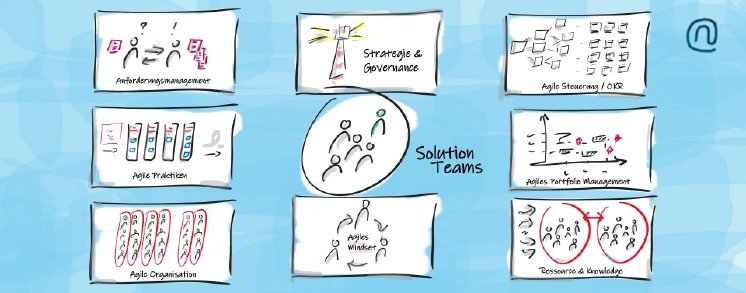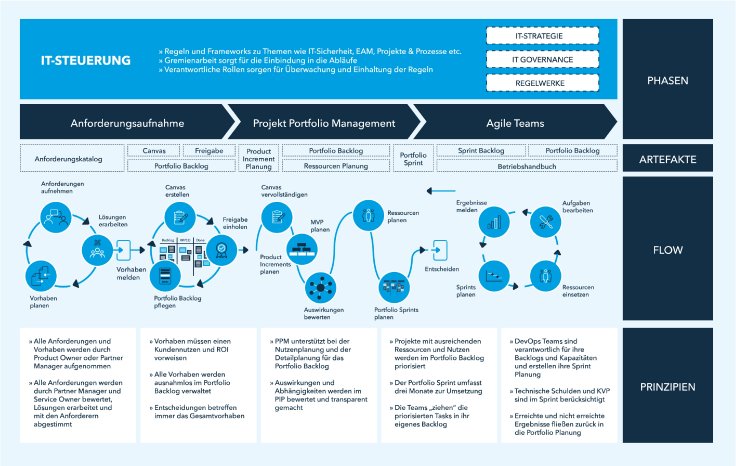by Holger Bredenkötter
The demands on a "modern" IT organisation have changed fundamentally; in addition to the classic characteristics such as operational stability and the provision of current technologies with high cost efficiency, there are additional wishes and expectations driven by the specialist departments and business partners - the immediate implementation of new business ideas in digital products before competitors are faster and secure market shares.
Digitalisation thus places new demands on corporate IT. In addition to its classic function, it must now play a central role as an enabler of innovative business models.
Time and solution pressure tempts shadow IT
The entrepreneurial need for fast, unconventional and cost-effective digital solutions is difficult to satisfy in grown IT organisations.
There, formal processes, responsibilities based on the division of labour, slow committees and complex decision-making processes often dominate. These were brought into the IT organisations by frameworks such as ITIL and were long considered a sign of high maturity and maximum operational security.
But the high demand of the business units for fast solutions and implementations, driven by business innovations and fast product cycles, overwhelms these organisations - with the result that shadow IT and proliferating SaaS solutions are purchased directly in the business units.
The solution approach of a "two-speed IT" cannot solve the problem, as old structures are only bypassed selectively, but the actual barriers remain.
Also the idea of "business IT", i.e. shifting the value-creating IT services to the specialist departments, can only work for a few, non-company-critical IT solutions. Overarching IT and infrastructure services are thus decoupled and the door is opened for isolated solutions and high complexities that actually belong in one responsible hand - that of IT.
Agility in the IT organisation - the first step towards Adaptive IT
The solution seems to be the agilisation of the IT organisation. The basic idea is that small, agile units are given a high degree of autonomy and responsibility, interfaces are reduced and the respective business solution is always in the foreground. It is not the process that determines the duration, but the business necessity and priority. IT thus becomes Adaptive IT: an agile organisation that is constantly aligned with new requirements.
The building blocks of Adaptive IT are briefly presented here.
SOLUTION TEAMS
Interdisciplinary Solution Teams take responsibility for complex IT tasks from requirements through development to ongoing operation, acting in a self-organised manner and with a high level of decision-making authority. Solution teams are comparable to SCRUM teams. Through a multidisciplinary team, they should be equipped with all the knowledge and skills needed to develop the product or service in question. They turn these products into small, immediately useful solutions (MVP).
MVP
is an abbreviation for "Minimum viable Product", literally "minimum viable or viable product". This refers to the smallest solution to a product idea that is functional in its own right and can generate benefits.
But cross-sectional tasks can also be handled by Solution Teams, e.g. for the provision of a standardised IT infrastructure, based on scalable technologies such as Hyperscaler, container solutions such as Docker or Kubernetes or as Software-defined Data Centre (SDDC).
- Agile strategy and governance
- Agile control with OKR
- Agile requirements management
- Agile project portfolio management
- Agile practices
- Agile organisation
- Agile Mindset
- Resource & Knowledge Management



